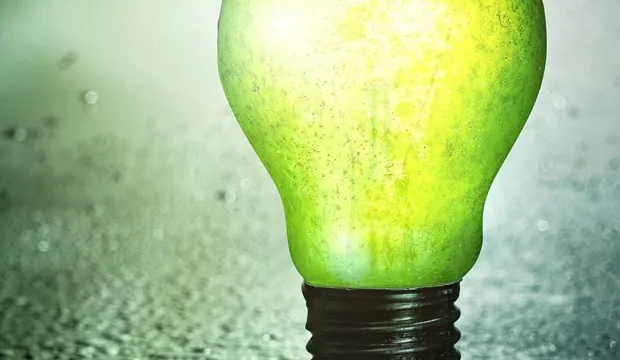
How does the light from a torch change with distance?
Carry out an experiment to measure how the light from a torch changes with the distance from a lamp
Light is a type of electromagnetic radiation. Visible light is the range of the electromagnetic spectrum that can be seen with the human eye. The brightness, or intensity, of light is typically measured as the power per unit area.
The lamp in a torch produces light when it is supplied with electricity. This light from a lamp would normally extend out in every direction, so a torch typically uses reflective materials, such as the inside of a silvered cone, to aim it where it is desired. However, this focus is rarely perfect, and the light spreads out as the distance from the lamp increases.
In this activity learners will carry out an experiment to measure how the light from a torch changes with the distance from the lamp. They will record their results in a table and plot a graph.
Activity: How Does the Light from a Torch Change with Distance?
This is one of a set of resources developed to support the teaching of the primary national curriculum. They are designed to support the delivery of key topics within science, design and technology, and maths (in this case, mainly science). This resource focuses on the investigation of how the light from a torch (flashlight) changes with distance.
This activity is designed to be carried out in small groups. It is recommended that the teacher carry out the activity in advance of the lesson, to determine whether the distances suggested give sufficient (or excessive) spread of the light image, as this will be determined by the design of the torch used. It is recommended that new batteries are used in the torch, as the light intensity may be affected by the amount of charge remaining in the batteries.
This could be used as a one-off activity in science or linked to maths learning about tables and graphs.
How long will this activity take?
This activity will take approximately 40-60 minutes to complete.
Tools/resources required
- Graph paper
- Masking tape
- Tape measures
- Torches/flashlights (with new batteries)
- Pencils
- (for extension) laser pointer
- (for extension) cut-out templates of simple shapes (e.g. square, triangle, circle), mounted on craft sticks
The engineering context
Engineers need to understand how light behaves when designing products for many practical applications. For example, when designing buildings, they may consider the provision of windows and artificial lighting; and when designing cars, they may consider the power and position of both internal and external lights and the placement of mirrors.
Suggested learning outcomes
By the end of this activity students will be able to carry out a scientific experiment and they will understand that the distribution of light from a torch changes with distance.
Download the free How Does the Light from a Torch Change with Distance? activity sheet below!
All activity sheets and supporting resources are free to download, and all the documents are fully editable, so you can tailor them to your students’ and your schools’ needs.
The activity sheet includes teacher notes, guidance, useful web links, and links (where appropriate) to the national curriculum in each of the four devolved UK nations; England, Northern Ireland, Scotland and Wales.
Please share your classroom learning highlights with us @IETeducation.




